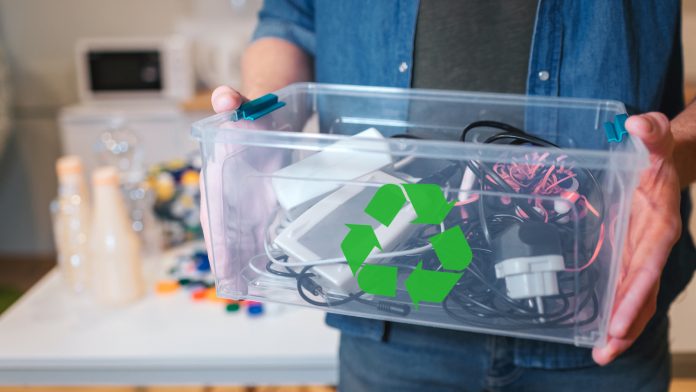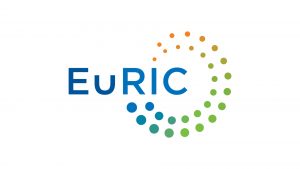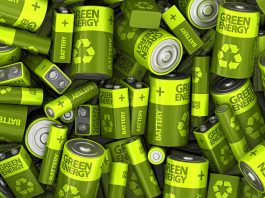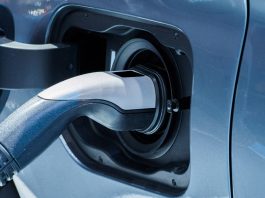The Batteries Roundtable outline the key advice in their recent report aiming to reduce lithium battery fires and improve the environmental impact of electrical waste and its processing.
The European Recycling Industries’ Confederation (EuRIC) is the umbrella organisation that encompasses a network of European Member States and National recycling associations. It is the link between the recycling industry and the European Union, acting as the platform for co-operation and the exchange of best practices across the industry.
EuRIC represents key companies included in the collection, processing, recycling, transport, and trade of various recyclables (metals, paper, plastics, tyres, construction & demolition waste from household or industrial waste, WEEE, ELV, Packaging, etc.) across Europe.
The confederation aims to promote recycling, an activity that is driven by the efforts of Small and Medium-size Enterprises (SMEs), working alongside a small selection of – equally important – larger corporations. All of them are local and global actors who provide non-outsourceable job opportunities and produce – locally – commodities that are traded and priced on a global scale.
The environmental benefits of EuRIC’s initiatives are vast. Not only does the promotion of safe recycling save natural resources, but it massively reduces pollution and helps limit energy consumption.
EuRIC and its members support a value chain approach and strive to nurture constructive relationships at all levels with stakeholders benefiting from recycling activities, including public authorities, manufacturers, producer responsibility schemes, academia, and NGOs.
Collecting and processing electrical waste
A key issue that is currently affecting the Waste Electrical and Electronic Equipment (WEEE) management chain is that of battery-caused fires, costing waste management facilities millions of euros every year and acting as a strong barrier to making Europe circular and carbon neutral. In response to this, EuRIC and the WEEE Forum, with the active contribution of experts from various organisations including EERA, EUCOBAT, Municipal Waste Europe, and the WEEELABEX Organisation (hereafter referred to as the Batteries Roundtable), have produced a comprehensive report outlining the issues around battery fires, their causes, and how the industry that manages the collection and treatment of spent batteries and electronic waste.
WEEE can adjust every step of their processing chain in order to limit the instances of battery fires and safely contain and handle them when they do occur. The report outlines important information such as best practices in handling and processing WEEE and the processes that facilities managing WEEE should begin to adopt to limit the possibility of battery-caused fires.
Recommendations and good practices compiled in the report aim at reducing the occurrence of thermal events caused by events such as short circuits, in which the poles of the same battery become connected due to external material, and physical shock, in which the batteries can become damaged and overheat, and also the issue of heat exposure, with temperatures above 60°C and below -20°C able to severely damage batteries.
However, the expected contribution of the waste management industry to these EU strategies is at risk and the waste management and recycling sector is in need of a strategy that will support it in tackling fires caused by WEEE containing lithium batteries.
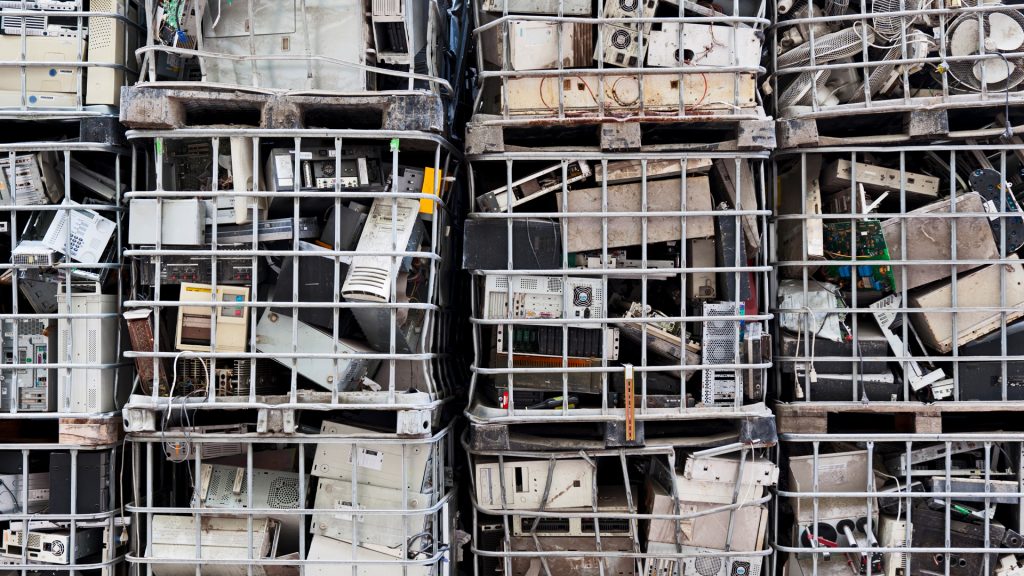
Appropriate storage and processing of electronic waste is key to ensuring safe recycling and reducing battery fires
The European Green Deal and the new Circular Economy Action Plan identify ‘electronics’ as key products within the value chain in which recycling plays a major role in achieving sustainability goals.
Lithium batteries and the risk they pose
The term ‘lithium battery’ refers to a family of batteries with varying chemistries, comprising several types of cathodes and electrocytes. Lithium batteries are generally divided into two categories, including primary (non-rechargeable) batteries which are lithium metal batteries that have lithium compounds and lithium metal as an anode, and secondary (rechargeable) batteries which are lithium-ion batteries where the lithium is only present in an ionic form in the electrolyte.
Lithium batteries, and in particular lithium-ion batteries, are key to the quality of life of the majority of people within modern society and they are the first choice of technology for a plethora of electronic and electrical equipment including laptops, mobile phones, tablets, and electric vehicles, whereas lithium metal batteries typically exist within watches, calculators, and car key fobs. The rise in usage and demand for portable electronics such as mobile phones and tablets, alongside environmental initiatives that champion electric vehicles, has driven the market growth of lithium batteries significantly.
However, with an increase in the use of lithium batteries also comes an increase in their disposal and an increase in the need to safely collect and recycle the materials within them. However, this can be difficult as the batteries become fragile and, if punctured or damaged, pose a high risk to the functionality of the collection but also of the recycling plan as they have an increased possibility of a thermal event.
Not only do thermal events present a significant risk of triggering further thermal events in surrounding stored batteries but they may also release combustible gasses, with the smoke from the fire containing carcinogenic, toxic, and corrosive substances.
Because of this, the appropriate storage and handling of lithium batteries, along with the necessary knowledge of how to respond if thermal events arise is something that should be widespread amongst personnel in WEEE management facilities personnel.
Thermal events can lead to what is known as a ‘battery incident’, in which a failing battery initiates a thermal event and acts as a point of ignition for the surrounding WEEE, which is typically a highly flammable mixture of metals and plastic, plus flammable contaminations (liquids, fats, dust, etc.).
A severe event can destroy large volumes of WEEE, emit toxic fumes, and damage buildings and treatment equipment, which are often equipped with expensive detection equipment and not built to withstand intense heat.
There are seven key types of thermal events including hot spot, sparks, smoke, slow-burning fire (no flame), slow-burning fire (flame), intense fire (rapid fire), and even escalating to explosions. These fires can have a serious affect on waste recycling facilities, endangering the lives of those who work there and even, in severe cases, causing the plant to be shut down for multiple days to contain and treat the fire and its aftermath. This has a huge knock-on effect financially and on the further recycling chain.
The extreme cost of these fires is often related to repairing or replacing the equipment and infrastructure damaged during a thermal event, temporary interruption or ending of operations, loss of waste burned – and hence of materials that would have been otherwise recycled and injected into the market – during the thermal event, maintenance, and replacement of extinguishing means. Other recently identified costs include the treatment of water used during the extinguishing of the fires, as it may contain persistent organic pollutants.
Other significant costs arising from the situation are associated with the transportation of WEEE containing batteries to another treatment facility in the event of a planned or unforeseen shutdown due to a severe thermal event, installation of additional detection and mitigation measures, changes in the infrastructure of the facilities, adaptation of operational protocols and training, insurance costs and additional requirements and/or limits imposed by licencing authorities. As of 2018, the average cost of all those incidents was estimated at €190,000, which can represent a significant burden for an individual company and especially for an SME.
Recommendations and best practices
The industry managing WEEE – containing batteries and single batteries is a key contributor to the EU’s circular economy and battery fires can have a significant knock-on effect to this, causing loss of profits at every level. Furthermore, the steady increase of fires caused by WEEE – containing batteries is affecting the policies of insurance companies, and the waste industry has raised concerns about the difficulty to obtain proper insurance coverage amid an increase of insurance premiums, coverage exclusions, or through simply not being able to obtain insurance. This poses a serious problem for companies whose activity permit, that they must obtain to operate, is reliant on them obtaining insurance coverage.
As part of the collation of the batteries roundtable report, a questionnaire was disseminated amongst companies and facilities carrying out the collection, sorting, transporting, and recycling of WEEE – containing batteries and single batteries. This questionnaire found that there is no significant relationship between the type of activities carried out on-site, those facilities that declared a thermal event in 2018, and those with good practices and mitigation measures implemented.
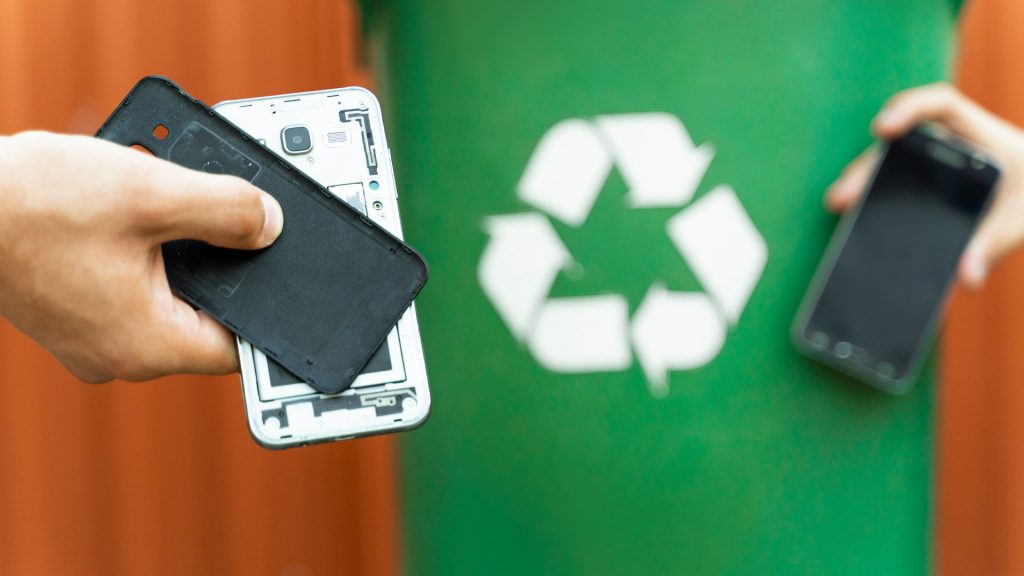
Separating electric devices and their batteries when recycling WEEE is a simple step consumers can take to assist in safe recycling practices
Reducing risk
The removal of batteries in the first treatment steps is key to reducing risk. This can ensure that all batteries are then appropriately handled and stored and reduces the risk of items being processed for recycling with live batteries still present inside. Further to this, the report has also detailed advice for manufacturers; advising that they make batteries removable manually or with commonly available tools where possible, and that they also mark clearly on devices where batteries are present to avoid the most obvious batteries being removed and smaller batteries being left and inappropriately entering machinery.
WEEE needs to be appropriately labelled to indicate what sorts of batteries it contains; this would allow waste sorters and processors to ensure all batteries have been removed and appropriately stored according to their specific requirements.
Further to this, it is essential that battery manufacturers build a strong educational relationship with recycling process plants to ensure that all waste operators know the specifics of battery chemistry, the types of batteries they may encounter, and where they can find more information on safely removing and processing these batteries.
As it has been established by the Circular Economy Action Plan that ‘80% of a products environmental impacts are determined in the design phase’ this relationship and close co-operation between battery producers and recycling companies is crucial to reducing the environmental impact of the industry.
Not only do recycling operators need to know more about how the batteries they handle react to pressures such as heat or damage, but the battery manufacturers also need to actively work towards creating more resistant and less fragile battery products. Simple measures such as adding a flame retardant to the battery’s electrolytes could cause a significant reduction in the causation of battery fires which are typically triggered by fragile battery products combusting.
The guidance within the report details that when batteries are removed from items they should then be placed in a separate barrel amidst layers of vermiculite, a natural mineral that is ostensibly fireproof, able to withstand great temperatures without transferring the heat. These barrels should then be stored outside, underneath a cover to protect from direct sunlight, and away from any walls that back onto the main recycling or storage facilities. This way, if a fire does occur, it is less likely to spread and risk a widescale battery incident.
If facilities must store batteries inside it is prudent that they ensure that waste is separated by high walls to reduce the risk of a fire spreading. Facilities must also forge strong relationships with local firefighting organisations/departments, outlining to staff and the fire department a set action plan in case a fire does break out. This would ensure staff are moved to safety and the fire department is contacted as quickly as possible and have the information they need to act immediately upon arriving at the scene.
Moving forward with WEEE
EuRIC together with the WEEE Forum and the aforementioned organisations recommend that the good practices detailed in the report are adapted to every facility individually and these practices are detailed individually depending on what part of the process the facility focuses on. They further advise that facilities closely examine the costs of implementing these best practices against the cost of handling battery fires, as in nearly all cases the cost of changing processes and providing training is less than that of the cost of fire caused damages.
The problem of battery fires is not solely linked to schemes, technologies, or skills related to collecting and recycling batteries, but also to the absolute need to better connect the dots between design and end-of-life treatment. More attention needs to be paid by policy-makers in order to tackle this problem. If manufacturers improve the design of batteries, the number of fires will decrease.
This problem cannot be completely tackled without help from the EU institutions, and policymakers have to quickly act should we wish to reach the target set by the new Circular Economy Action Plan and the EU Green Deal.
Through this joint report, it is EuRIC’s objective to provide the battery value chain, from manufacturing to recycling, with the best guidance available to date on how to limit and reduce battery fires. This will help to protect the economy around battery recycling that provides so many crucial jobs across Europe and will also reduce the environmental impact of the recycling industry.
EuRIC
www.euric-aisbl.eu/
Please note, this article will also appear in the seventh edition of our quarterly publication.

